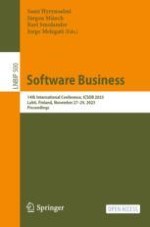
Open Access 2024 | OriginalPaper | Buchkapitel
Investigating the Barriers that Women Face in Software Development Teams Focusing on the Context of Proprietary Software Ecosystems
verfasst von : Juliana Carvalho Silva do Outão, Luiz Alexandre Martins da Costa, Rodrigo Pereira dos Santos, Alexander Serebrenik
Erschienen in: Software Business
Verlag: Springer Nature Switzerland
Aktivieren Sie unsere intelligente Suche, um passende Fachinhalte oder Patente zu finden.
Wählen Sie Textabschnitte aus um mit Künstlicher Intelligenz passenden Patente zu finden. powered by
Markieren Sie Textabschnitte, um KI-gestützt weitere passende Inhalte zu finden. powered by